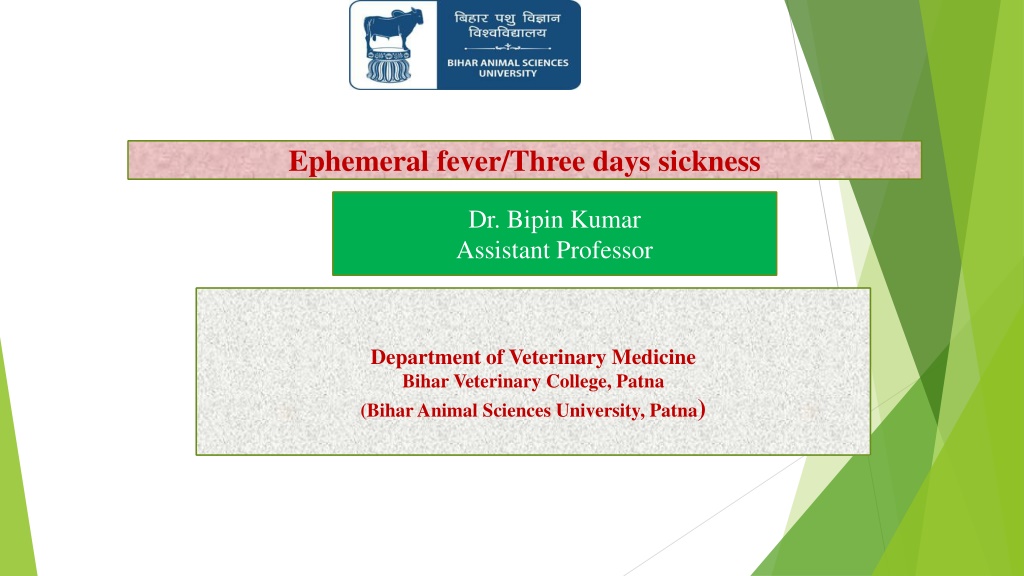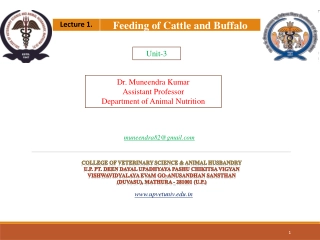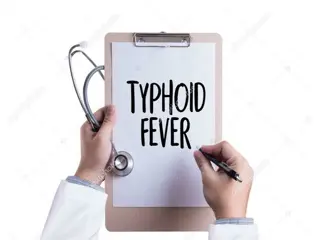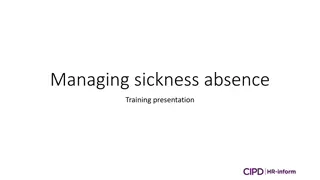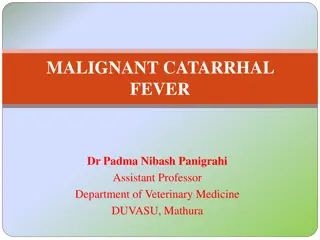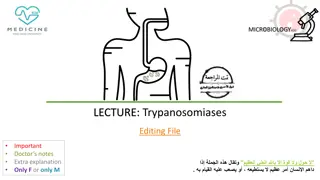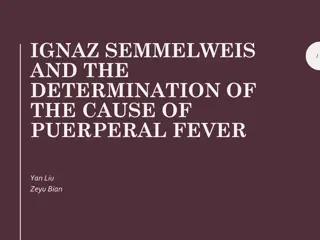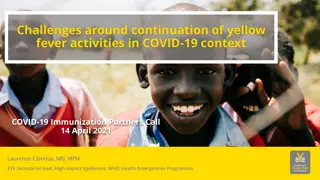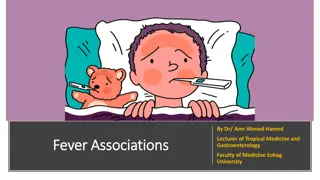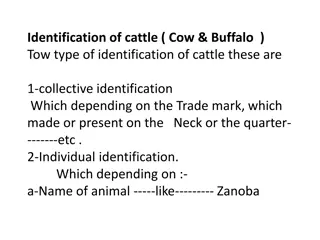Understanding Ephemeral Fever/Three-Day Sickness in Cattle and Water Buffalo
Ephemeral fever (Three-Day Sickness) is an acute arthropod-borne viral disease affecting cattle and water buffalo. It is caused by the Bovine Ephemeral Fever Virus and manifests with biphasic fever, decreased milk yield, and other clinical signs. The disease has varying prevalence and can lead to high morbidity rates, particularly during epidemics. Diagnosis is primarily based on clinical signs during outbreaks, with laboratory confirmation through serology and virus isolation. Treatment focuses on rest for affected animals.
Download Presentation

Please find below an Image/Link to download the presentation.
The content on the website is provided AS IS for your information and personal use only. It may not be sold, licensed, or shared on other websites without obtaining consent from the author. Download presentation by click this link. If you encounter any issues during the download, it is possible that the publisher has removed the file from their server.
E N D
Presentation Transcript
Ephemeral fever/Three days sickness Dr. Bipin Kumar Assistant Professor Department of Veterinary Medicine Bihar Veterinary College, Patna (Bihar Animal Sciences University, Patna)
Introduction It is a acute arthropod-borne viral disease of Cattle and Water Buffalo reported from Africa, the Middle East, Australia and Asia. Low levels of antibody have been recorded in several antelope species and giraffe, but the specificity has not been confirmed. Rhabdoviridae => Ephemerovirus => Bovine ephemeral fever virus (BEFV) BEFV can be transmitted from infected to susceptible cattle by IV inoculation as little as 0.005 mL of blood collected during the febrile stage is infective. No transmission by contact or fomites The virus does not appear to persist in recovered cattle, which often have a lifelong immunity.
Epidemiology The prevalence, geographic range, and severity of the disease vary from year to year, and epidemics occur periodically. During epidemics, onset is rapid many animals are affected within days or 2 3 wk. Bovine ephemeral fever is most prevalent in the wet season (when conditions favor multiplication of biting insects) It disappears abruptly in winter. Morbidity may be as high as 80%. Overall mortality is usually 1 2%.
Clinical Findings Biphasic to polyphasic fever (40-42 C [104 107.6 F]), shivering, inappetence, lacrimation, serous nasal discharge, drooling, Tachycardia, tachypnea or dyspnea, atony of forestomachs, depression, stiffness and lameness(shifting lameness), and a sudden decrease in milk yield. Affected cattle may become recumbent and paralyzed for 8 hr to >1 wk. Post recovery, milk production often fails to return to normal levels until the next lactation. Abortion, with total loss of the season's lactation, occurs in ~5% of cows pregnant for 8 9 mo. Bulls, heavy cattle, and high lactating dairy cows are the most severely affected, but spontaneous recovery usually occurs within a few days (that s why called Three Day Sickness). More insidious losses may result from decreased muscle mass and lowered
Diagnosis It is based almost entirely on clinical signs in an epidemic. Laboratory confirmation is by: Serology Virus isolation The neutralization test and the blocking ELISA are recommended for antibody detection and give similar results. A 4-fold rise in antibody titer between paired sera collected 2 3 weeks apart confirms infection. The lesions include polyserositis affecting pleural, pericardial, and peritoneal surfaces Serofibrinous polysynovitis, polyarthritis, polytendinitis, and cellulitis and focal necrosis of skeletal muscles. Generalized edema of lymph nodes and lungs, as well as atelectasis (collapse of
Treatment & Control Complete rest is the most effective treatment, and recovering animals should not be stressed or worked because relapse is likely. NSAIDs given early and in repeated doses for 2 3 days are effective. Oral dosing should be avoided unless the swallowing reflex is functional. Antibiotic treatment to control secondary infection and rehydration with isotonic fluids may be warranted. Attenuated virus vaccines appear to be effective but should be used only in endemic areas. Inactivated virus vaccines have not produced longterm protection against experimental challenge with virulent virus and cannot guarantee lasting immunity, but they may boost the immunity produced by live virus vaccine. The efficacy of vector control remains uncertain, because the insect vectors have not been fully identified.
